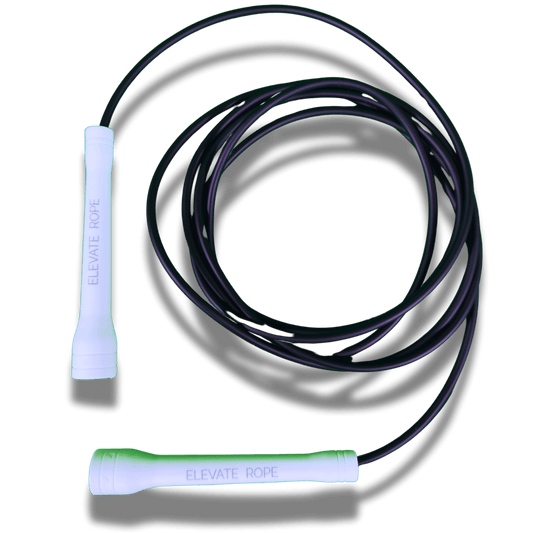Plastische chirurgie kan levensveranderend zijn en biedt zowel functionele als cosmetische verbeteringen. Herstel eindigt echter niet zodra u de operatietafel verlaat. Een cruciaal aspect van genezing en het behouden van resultaten is hoe en wanneer u na plastische chirurgie weer kunt beginnen met sporten. Het begrijpen van de balans tussen het toestaan dat uw lichaam geneest en actief blijven is essentieel voor een soepel herstel en optimale resultaten.
Begrip van herstelstadia na plastische chirurgie
Elke plastische chirurgieprocedure omvat een initiële genezingsperiode gevolgd door fasen van geleidelijk herstel. De weefsels van je lichaam hebben tijd nodig om goed te genezen voordat ze worden blootgesteld aan fysieke stress. De duur en vereisten van deze fasen kunnen verschillen afhankelijk van het type uitgevoerde operatie.
Voor de meeste patiënten omvat het directe herstel wondgenezing, het beheersen van zwelling en het voorkomen van infecties. Daarna begint een geleidelijke herintroductie van activiteit op basis van het vermogen van het lichaam om stress te verwerken en zichzelf te herstellen. Nauw samenwerken met je chirurg om je voortgang te volgen is essentieel.

Waarom lichaamsbeweging belangrijk is na plastische chirurgie
Lichaamsbeweging biedt verschillende voordelen in het kader van herstel, maar timing is alles. Vroege beweging kan stijfheid verminderen en de circulatie bevorderen, maar te veel activiteit te snel kan complicaties veroorzaken.
Lichamelijke activiteit helpt de mentale gezondheid, vermindert stress en kan het slaappatroon verbeteren, wat allemaal factoren zijn die het algehele herstel bevorderen. Respect voor de grenzen van je lichaam is echter ononderhandelbaar tijdens deze unieke periode.
Verschillende operaties brengen ook verschillende herstelbehoeften met zich mee. Bijvoorbeeld, vrouwen die herstellen van een borstverkleining moeten vaak enkele weken bovenlichaamsspanning vermijden, terwijl procedures zoals buikwandcorrecties of facelift een andere reeks beperkingen en tijdlijnen kennen.
The New Jersey Breast Reduction Center vermeldt dat lichaamsbeweging is cruciaal voor de lange termijn gezondheid, maar het type en de timing moeten worden afgestemd op de operatie die je hebt ondergaan. Na een borstverkleining kan lichte activiteit voor het onderlichaam eerder mogelijk zijn, terwijl werk voor het bovenlichaam moet worden uitgesteld om genezende weefsels te beschermen.
Herstel na een borstverkleining kan ook een van de meest transformerende zijn. Naast fysieke genezing merken veel vrouwen dat lichaamsbeweging leuker wordt zodra overtollig gewicht en ongemak verdwenen zijn. Activiteiten zoals hardlopen, yoga of krachttraining voelen vaak gemakkelijker en natuurlijker aan, waardoor fitness niet alleen onderdeel van het herstel wordt, maar ook een langdurig voordeel van de operatie.
Algemene tijdlijn voor terugkeer naar lichaamsbeweging
Weten wanneer en hoe je activiteit weer kunt oppakken kan verwarrend zijn. Het is belangrijk realistische verwachtingen te hebben, want het proces overhaasten kan de resultaten van je operatie in gevaar brengen.
Hier is een algemene tijdlijn voor het hervatten van lichaamsbeweging na plastische chirurgie. Houd er rekening mee dat individuele aanbevelingen kunnen variëren.
-
Eerste week (dagen 1-7): Focus op rust en wondgenezing. Zacht wandelen wordt over het algemeen aangemoedigd om de circulatie te behouden en het risico op bloedstolsels te verminderen, maar zwaardere activiteiten zijn in deze fase verboden.
-
Weken 2-3: Je kunt lichte activiteiten langzaam opbouwen als je chirurg dit goedkeurt. Korte wandelingen binnenshuis zijn meestal acceptabel, maar vermijd tillen, bukken of enige activiteit die de bloeddruk verhoogt.
-
Weken 4-6: Geleidelijke herintroductie van niet-impact oefeningen zoals hometrainer of lichte rek kan toegestaan zijn. Core- of bovenlichaamsoefeningen zijn nog steeds verboden, vooral na torso- of gezichtsoperaties.
-
Na 6 weken: Met toestemming van de chirurg kunnen veel mensen intensievere trainingen hervatten, maar aanpassingen kunnen nog steeds nodig zijn. Activiteiten met hoge impact kunnen nog steeds beperkt zijn na uitgebreidere ingrepen.
Laat je plastisch chirurg deze aanbevelingen altijd afstemmen op jouw unieke situatie voor het veiligste herstel.

Voordelen van bewegen na een operatie
Het hervatten van fysieke activiteit, mits correct gedaan, heeft belangrijke voordelen voor je herstel. Bewust zijn van deze voordelen kan je motiveren om de instructies van je arts op te volgen en je genezingsproces comfortabeler te maken.
Meer beweging helpt de vorming van bloedstolsels te voorkomen, wat een hoger risico is na een operatie. Daarnaast kan lichte oefening zwelling verminderen en een gelijkmatige genezing bevorderen door de circulatie in je lichaam te verbeteren. Deze voordelen kunnen bijdragen aan een sneller herstel en zelfs de uiteindelijke chirurgische resultaten verbeteren door complicaties te voorkomen.
Activiteiten om te vermijden tijdens vroege herstelperiode
Hoewel activiteit gunstig is, moeten bepaalde oefeningen en bewegingen strikt worden vermeden in de eerste weken na de operatie. Te snel terugkeren naar je gebruikelijke trainingsroutine brengt je resultaten en gezondheid in gevaar.
Hier zijn de belangrijkste activiteiten die je moet vermijden na een plastische operatie, met korte uitleg waarom elke activiteit risicovol is.
-
Zwaar tillen: Het tillen van gewichten of zware voorwerpen verhoogt de bloeddruk, wat incisies kan belasten en bloeding of vertraagde genezing kan bevorderen, vooral na borst- of buikoperaties.
-
Hardlopen of cardio met hoge impact: Het schudden en de impact van hardlopen of soortgelijke activiteiten kunnen het sluiten van de wond verstoren, zwelling vergroten en zelfs interne hechtingen beschadigen.
-
Zwemmen: Zwembaden en open water bevatten bacteriën die genezende wonden kunnen binnendringen, wat het infectierisico aanzienlijk verhoogt. Waterdruk kan ook hechtingen belasten.
-
Contactsporten: Elke activiteit waarbij je het risico loopt te vallen of geraakt te worden is verboden totdat je volledig genezen bent; dit voorkomt trauma aan kwetsbare operatielocaties.
-
Overmatige rek: Rekken of draaien, vooral na buik- of lichaamschirurgie, kan aan incisies trekken en het genezingsproces beïnvloeden.
Het kan verleidelijk zijn om snel terug te keren naar deze activiteiten, maar terughoudendheid is een cruciale investering in je lange termijn gezondheid en chirurgische uitkomsten.
Oefeningen Afstemmen op Verschillende Chirurgieën
Oefenaanbevelingen kunnen sterk verschillen afhankelijk van het type chirurgie dat je hebt ondergaan. Bewustzijn van deze verschillen helpt je veilig te herstellen zonder de resultaten in gevaar te brengen.
Bij gezichtsbehandelingen zoals rhinoplastiek of facelift kan zelfs een lichte verhoging van hartslag en bloeddruk zwelling of blauwe plekken veroorzaken, dus een langere rustperiode is aan te raden. Na lichaamscontourchirurgie zoals buikwandcorrecties of liposuctie moeten core- en buikspieroefeningen worden uitgesteld totdat het weefsel volledig is genezen, vaak tot acht weken, om het risico op een hernia of littekenopening te vermijden.
Chirurgie zoals borstvergroting of -verkleining beperkt vaak arm- en borstbewegingen gedurende enkele weken om de juiste plaatsing en genezing van implantaten of weefsel te waarborgen. Elke procedure heeft zijn eigen nuances, dus het volgen van gepersonaliseerde instructies van je chirurg is essentieel.
Luisteren naar je Lichaam: Tekenen van Te Veel, Te Snel
Letten op signalen van je lichaam is fundamenteel als je je activiteit opvoert. Symptomen zoals toegenomen pijn, warmte, ongebruikelijke zwelling of afscheiding bij de chirurgische plek zijn waarschuwingen om je activiteit te verminderen.
Als je kortademig bent, duizelig wordt of symptomen opmerkt die ongewoon lijken, stop dan met sporten en neem contact op met je zorgverlener. Deze tekenen kunnen complicaties aangeven, en ze serieus nemen zorgt voor je veiligheid en behoudt de chirurgische resultaten.
Samenwerken met je Chirurg en Zorgteam
Je plastisch chirurg is je beste bron voor herstelplanning. Regelmatige vervolgafspraken helpen je genezing te volgen en de richtlijnen voor activiteit aan te passen aan jouw unieke situatie.
Bespreek eventuele trainingsplannen voordat je je trainingsschema hervat. Je chirurg kan helpen realistische verwachtingen te stellen en je begeleiden bij een veilige, effectieve herintroductie van fysieke activiteit die je resultaten beschermt.
Beste Praktijken voor een Succesvolle Terugkeer naar Beweging
Wanneer je toestemming hebt om weer te gaan sporten, is het belangrijk om rustig terug te keren in je routine voor zowel veiligheid als het behouden van je chirurgische resultaten. Hier zijn enkele beste praktijken om te volgen als je weer actief wordt.
-
Begin Langzaam: Begin met kortere, mildere sessies en houd de reactie van je lichaam goed in de gaten. De voortgang moet geleidelijk zijn in plaats van agressief.
-
Geef Prioriteit aan Vorm boven Intensiteit: Let goed op hoe je lichaam beweegt, vooral rond chirurgische plekken. Een goede houding zorgt ervoor dat er geen stress op kwetsbare weefsels komt.
-
Blijf Gehydrateerd: Chirurgie en herstel kunnen de normale hydratatiestatus verstoren. Houd water in de buurt en drink regelmatig tijdens activiteit.
-
Draag ondersteunende kleding: Gebruik indien voorgeschreven chirurgische compressiekleding of ondersteunende beha's, omdat deze de genezende weefsels beschermen tijdens het sporten.
-
Luister naar pijnniveaus: Ongemak is een signaal om te vertragen of een pauze te nemen. Aanhoudende pijn is een teken om te stoppen en je arts te raadplegen.
Het volgen van deze praktijken helpt je te voorkomen dat je terugvalt en behoudt de verbeteringen die je door je operatie hebt bereikt terwijl je terugkeert naar een gezonde, actieve levensstijl.
Psychologische voordelen en emotionele gezondheid
Lichamelijke activiteit draagt krachtig bij aan mentaal welzijn, vooral tijdens herstel. Zachte oefeningen kunnen helpen angst en depressieve symptomen te verminderen die soms na een operatie optreden.
Actief blijven bevordert ook een gevoel van normaliteit en controle, wat helpt bij de emotionele aanpassing aan lichaamsveranderingen na plastische chirurgie. Het prioriteren van mentale gezondheid naast fysieke genezing maakt je herstelreis soepeler en positiever.
Realistische verwachtingen stellen
Het is normaal om graag terug te willen naar je vorige activiteitsniveau, maar geduld is de sleutel. Het genezingsproces kost tijd en te hard pushen kan het werk van je chirurg ongedaan maken.
Onthoud dat de vooruitgang in fitheid na de operatie in het begin langzamer zal zijn. Het accepteren en respecteren van deze tijdlijn is essentieel om je gewenste chirurgische resultaten te bereiken en te behouden.
Een gepersonaliseerd herstelplan maken
Het ontwikkelen van een individueel oefenplan met je zorgverlener kan leiden tot de meest succesvolle resultaten. De beste plannen houden rekening met je specifieke operatie, medische geschiedenis, basisconditie en persoonlijke doelen.
Een gepersonaliseerde aanpak helpt je je krachtig te voelen tijdens het genezingsproces en minimaliseert risico's. Het bespreken van zorgen of doelen met je chirurg zorgt ervoor dat je plan flexibel blijft en is afgestemd op jouw behoeften.
Belangrijkste punten voor een veilig en effectief herstel
Succesvol terugkeren naar lichaamsbeweging na plastische chirurgie draait om timing, communicatie en zelfbewustzijn. Terugkeren naar je gebruikelijke routine is een proces dat zorgvuldige planning, aandacht voor de signalen van je lichaam en regelmatig contact met je chirurg vereist. Als je het advies van experts volgt en naar je eigen lichaam luistert, kun je veilig weer lichamelijke activiteit hervatten, je herstel verbeteren en jarenlang genieten van de voordelen van je chirurgische resultaten.
Geniet je van dit artikel? Misschien vind je dit ook leuk:
- Online aanbiedingen en kortingscodes voor populaire winkel aankopen
- Buiten micro-gyms die hotelgasten veranderen in vaste klanten
- Pre-workout voeding: wat te eten voor een training
- Pijnlijke spieren na een training? Zo versnel je het spierherstel
- Springtouw om babyvet te verliezen voor nieuwe moeders














